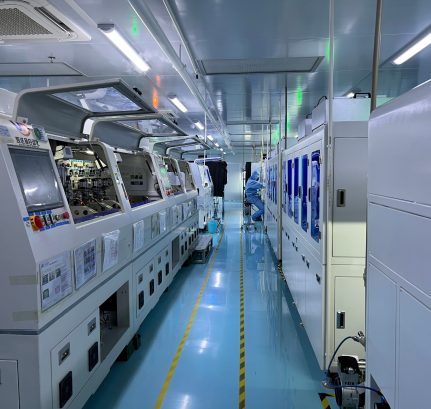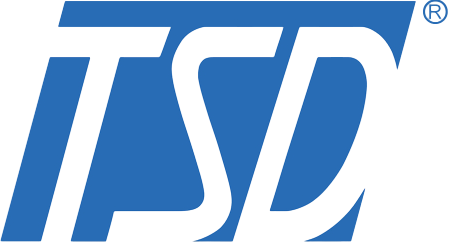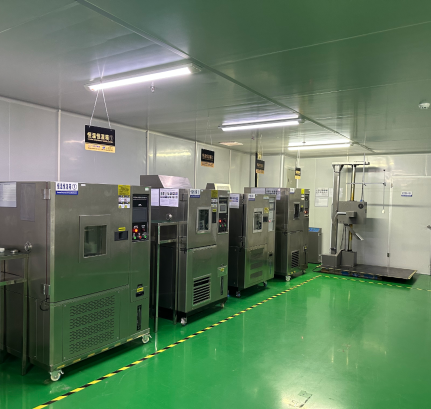Elevating Display Manufacturing in Today’s Industry
The Role of a Modern LCD Display Factory in High-Quality Production
A modern lcd display factory defines the benchmark for visual technology production by adhering to precision, efficiency, and consistency from raw substrate handling to final module testing. Such a facility coordinates multiple stages including glass cutting, thin film deposition, cell assembly, backlight integration, and final calibration. Each production step is tightly controlled to ensure uniform brightness, minimal dead pixels, accurate color reproduction, and structural accuracy. The factory layout is designed for lean material flow, minimizing contamination risks and cross‑over errors. Highly automated processes reduce manual intervention, allowing repeatable speed and output quality. From wafer to finished panel, the modern lcd display factory upholds rigorous protocols that safeguard performance, durability, and reliability for consumer electronics, medical screens, automotive displays, or industrial signage markets.
Why Production Standards Matter in a Modern LCD Display Factory
Meeting exacting production standards in a modern lcd display factory ensures that each panel aligns with quality expectations such as Mura free appearance, uniform response time, color gamut coverage, and low defect rates. Standardized protocols impact yield ratios, cost efficiency, and brand reputation. In competitive markets, manufacturers who invest in ISO certifications, CE, RoHS, REACH compliance, and environmental controls stand out. A well‑managed modern lcd display factory includes data traceability from raw component sourcing through each production stage, often logged via ERP and MES systems. This level of transparency ensures that any deviation can be traced, corrected, and prevented from reoccurring. The result is consistent product batches that meet customer expectations and regulatory standards.
Core Manufacturing Areas and Standards in LCD Production
Cleanroom Environment and Contamination Control Protocols
A modern lcd display factory operates within strict cleanroom environments—typically ISO Class 5 or better—throughout critical zones like thin film deposition, cell assembly, and module sealing. Filtration systems maintain particulate levels to one micron or smaller. Personnel must wear full-body suits, gloves, masks, and shoe covers; airlock entry, gowning stations, and one-way material flow reduce contamination. Relative humidity and temperature are maintained within narrow bands—often ±2°C and 45‑55% humidity—to prevent glass condensation, coating defects, or result in poor cell lamination. Air change rates of hundreds per hour ensure laminar flow and constant purity. High standards prevent defects such as pinholes, Mura, or electrode misalignment. Tools and fixtures are periodically cleaned and verified with particle counters. These controls are essential for ensuring that every module emerging from a modern lcd display factory is defect‑free and ready for demanding applications.
Material Handling and Substrate Preparation Standards
In a modern lcd display factory, substrate materials—such as glass, polarizer films, and color filters—must meet tight tolerances in flatness, thickness, and optical clarity. Incoming inspection includes dimensional verification, scratch/pit inspection, and contamination checks under ultra‑violet lamps or via surface scanners. Films are stored in controlled environments with humidity and temperature monitoring to prevent substrate warpage. Substrate cutting, cleaning, and etching steps are performed with ultrapure water, detergent systems, and DI rinsing, followed by thorough drying in HEPA‑filtered ovens. The modern lcd display factory ensures that no foreign particles or residues remain before deposition. Tracking labels and barcodes link each substrate batch to fabrication steps. These standards improve yield and reduce rework, enabling precise thin film transistor alignment and even substrate bonding across entire production volumes.

Deposition, Assembly, and Quality Control Processes
TFT Array Fabrication and Backplane Integrity
One of the most critical procedures in a modern lcd display factory is the deposition and patterning of thin film transistors (TFTs), color filters, and electrode layers. This process requires precise photolithography, sputtering, etching, and chemical treatments on both substrates. Standards include uniform coating thicknesses (controlled to sub-angstrom levels) and exact pixel pitch across the panel. Metrology tools measure line widths, alignment tolerance, and sheet resistance as the process flows. The factory routinely calibrates lithography masks to sub‑micron tolerances, and inspection systems detect dead pixels or bridging defects. Any detected fault triggers automatic rejection or rework before assembly. This ensures that each substrate entering cell assembly meets specifications. In addition, the modern lcd display factory employs statistical process control—monitoring parameters like deposition rates, temperature, and pressure—to guarantee consistent backplane performance and pixel switching behavior.
Liquid Crystal Cell Formation and Sealing Accuracy
After TFT-backplane fabrication, two substrates are laminated with liquid crystal material in between. This process demands exact cell gap spacing—typically controlled to within a few micrometers—to ensure uniform optical performance. A modern lcd display factory utilizes precision spacers, controlled vacuum, and UV‑curable sealants during cell bonding. Cleanliness standards remain critical: any dust or moisture between substrates can cause dark spots or delamination. After bonding, panels undergo vacuum filling of liquid crystal and curing under UV light. Residual moisture removal and sealing reliability checks follow. Post-sealing, modules are tested for leakage current, contrast ratio, response time, and defect pixel counts. Automated optical inspection systems scrutinize each panel under uniform illumination to detect Mura or brightness shifts. These measures guarantee that cell assembly yields stable, high‑contrast screens consistent with product specifications.
Backlight Integration, Calibration, and Final Testing
Backlight Unit Assembly and Brightness Uniformity
Once cell modules pass initial testing, a backlight unit—typically using LED edge or direct arrays—is integrated. The modern lcd display factory ensures that the backlight delivers consistent luminance across the panel through diffuser films, prism sheets, and light guide plates. During assembly, automated machines apply adhesive layers, align sheets, and seal the unit accurately. Optical calibration tests measure brightness uniformity, color temperature, and chromaticity. Results are compared to standards like ΔE < 3 color variation and luminance within ±10% across the display. In high-tier factories, spectroradiometers log color profiles, allowing calibration adjustments to meet precise specifications. The finished module is also checked for flicker, power consumption, and thermal performance under operational loads. These stringent standards help ensure reliability and consistent viewing experience, hallmarks of a modern lcd display factory’s quality control.
Line Testing, Burn‑In, and Environmental Stress Tests
Before packaging, each module undergoes full-line testing including electrical performance, pixel functionality, and optical uniformity. Panels must pass dynamic burn‑in cycles—running at elevated voltage and temperature for hours—to erratic pixel behavior or early failures. Environmental stress testing involves cycles of high/low temperature and humidity, vibration tests, and UV exposure to verify stability under real-world conditions. The modern lcd display factory also performs drop tests, bending assessments, and pressure testing for rugged applications. All results are recorded and matched to panel serial numbers. Failure analytics track patterns and inform process improvements. Only panels meeting all criteria—no dead pixels, stable luminance, minimal response variation, and environmental resilience—are approved for final packaging and shipment.
Continuous Improvement and Sustainability Focus
Data Collection, Analytics, and Yield Enhancement
In a well‑run modern lcd display factory, production data is captured at every process node—from substrate inspection to final burn‑in results. Key metrics include yield rate, defect density, throughput hours, and return rates. Advanced analytics tools identify patterns such as drift in alignment, increased particle contamination, or reduced yield due to equipment deviations. Lean manufacturing practices like Six Sigma, 5S, and Kaizen are implemented to minimize waste and improve efficiency. Continuous process review improves cycle times and lowers per‑panel cost. Real‑time dashboards allow management to monitor line performance and initiate corrective actions immediately. This proactive approach ensures that the modern lcd display factory evolves with technology improvements while maintaining quality and efficiency.
Environmental and Safety Standards Compliance
A modern lcd display factory adheres to global safety and environmental regulations such as ISO 14001 (environmental management), ISO 45001 (occupational health), and RoHS/REACH compliance regarding hazardous materials. Waste streams—such as etchants, solvents, and cleaning agents—are treated via on‑site purification and recovery systems. HVAC systems manage chemical fumes and minimize environmental releases. Employee safety protocols include eye‑wash stations, chemical handling training, and regular health monitoring. Energy-efficient lighting and process equipment reduce consumption, and recycling programs reclaim glass scraps and chemical residues. These sustainability measures are integrated into manufacturing processes, ensuring that the modern lcd display factory operates responsibly and reduces ecological impact while delivering high‑tech display solutions.
FAQ
What cleanroom classification does a modern lcd display factory typically use?
A modern lcd display factory generally operates at ISO Class 5 or better in critical production zones like TFT fabrication and cell assembly, ensuring low particulate levels to prevent defects and protect high-resolution display quality.
How is defect tracking managed in LCD production?
Defects are logged at each stage—substrate inspection, TFT patterning, cell sealing, backlight assembly—with statistical data linked to batch codes and panels via MES. This enables root-cause analysis and corrective steps to improve yield.
What reliability testing is performed before shipping finished LCD panels?
Modules undergo burn‑in tests, environmental stress cycles (temperature, humidity, UV, vibration), and optical evaluation for luminance uniformity and response time. Only panels passing these rigorous tests leave the factory.
How does sustainability factor into LCD factory standards?
Sustainability is integrated via hazardous material recycling, energy efficiency measures, wastewater treatment, RoHS/REACH compliance, and certifications like ISO 14001. These practices ensure responsible production without compromising display quality.




